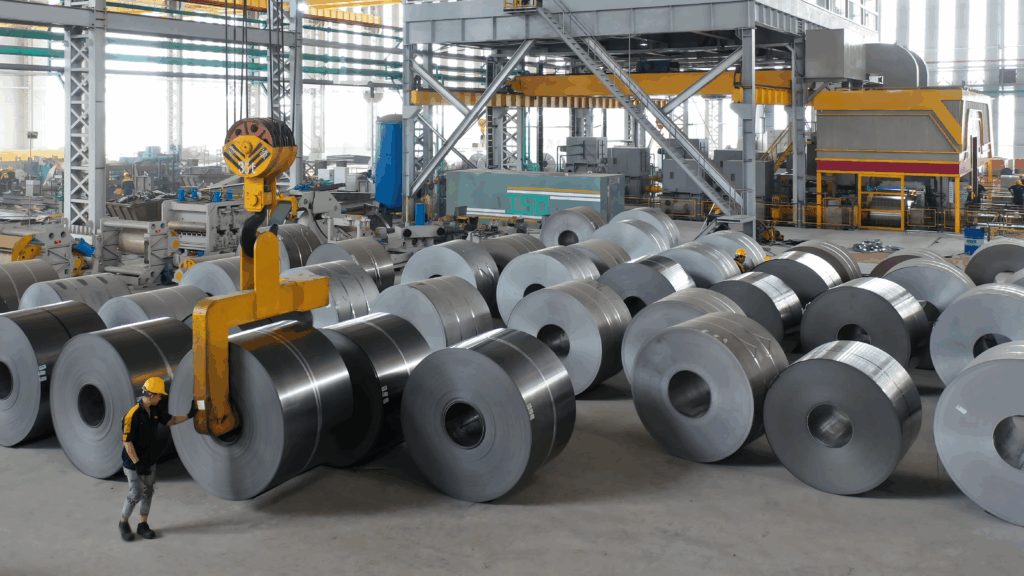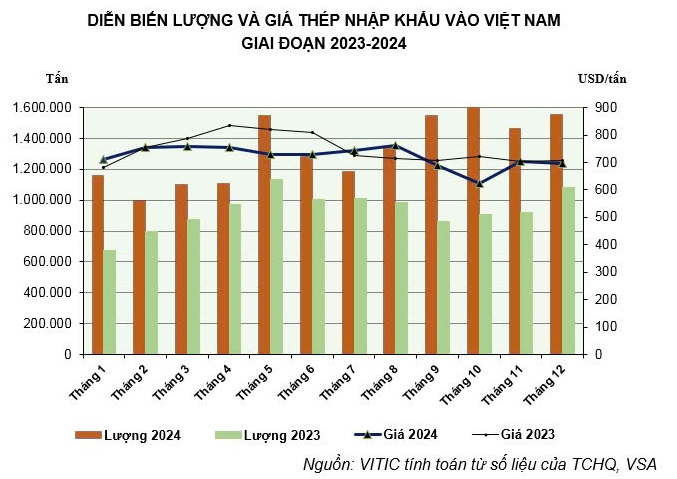As countries tighten regulations on emissions and trade, Vietnam’s steel industry is facing significant risks due to the European Union’s (EU) new policies. The EU’s stricter Carbon Border Adjustment Mechanism (CBAM) and protective measures for domestic industries are not only increasing export costs but also creating new barriers for Vietnamese businesses.

EU Strengthens Steel Import Controls
Recently, the European Commission (EC) announced its Steel and Metals Action Plan, which aims to tighten import control measures, particularly regarding “clean steel.” This poses major challenges for Vietnam’s steel industry, which heavily relies on the EU as a key export market.
Tightening the Carbon Border Adjustment Mechanism
One of the EC’s key measures is expanding the CBAM to cover downstream steel and aluminum products. The Commission is concerned that businesses may circumvent regulations by making minor modifications to goods or importing downstream products from countries with weaker climate policies. As a result, the EC has pledged to conduct a comprehensive CBAM review in Q4 2025 and propose new legislation to expand its scope while implementing strategies to prevent circumvention.
Protecting the European Steel Industry
To further safeguard the domestic steel industry, the EC plans to adjust its trade defense mechanisms, including:
- Reducing steel imports subject to safeguard measures by 15%, achieved by lowering the liberalization rate from 1% to 0.1%, eliminating transition mechanisms, and restricting quota access.
- Implementing a new long-term safeguard measure from July 1, 2026, after the current measure expires on June 30, 2026.
- Strengthening trade defense investigations into the aluminum sector, with additional measures expected soon.
- Applying the “melt and cast” origin rule to prevent tariff circumvention by shifting production stages to non-targeted countries.
Challenges for Vietnam’s Steel Industry
The EU is currently Vietnam’s largest steel export market, accounting for 23% of total exports. However, with the new import restrictions, Vietnamese steel companies will face increasing difficulties in accessing this market.
According to the Trade Remedies Authority of Vietnam, the EC will proactively initiate investigations based on potential harm rather than waiting for actual damage to occur. This places urgent demands on domestic enterprises to review their production and export activities to ensure compliance with new regulations.
In 2024, Vietnam exported approximately 12.62 million tons of steel, a 13.47% increase compared to the previous year. However, as the EU tightens its controls, companies must swiftly adapt to avoid future export restrictions.
As of January 2025, Vietnam’s steel exports reached 919,875 tons, with a total value of $611 million. Compared to the same period last year, this represents a 19% decrease in volume and a 24% drop in value. The average export price stood at $664.2 per ton, down 6%. The U.S. remained the largest export market, with a trade value of $75 million, marking a 32% decline year-on-year.
The Trade Remedies Authority advises industry players to closely monitor regulatory developments and proactively adjust their production and business strategies to maintain market share in the EU while expanding into other potential markets.
#taynamsteel
#tanamazgold
#tanamazplatium
#tondoctor





